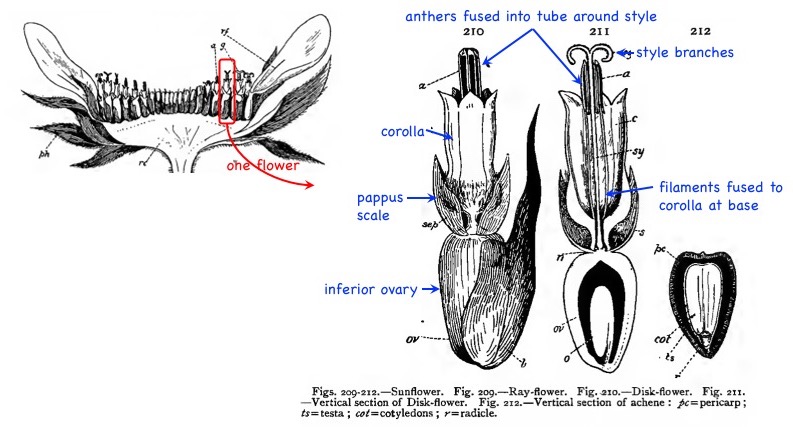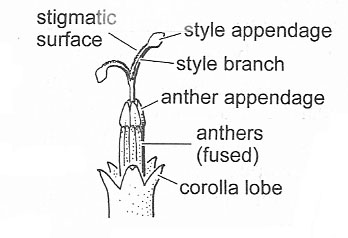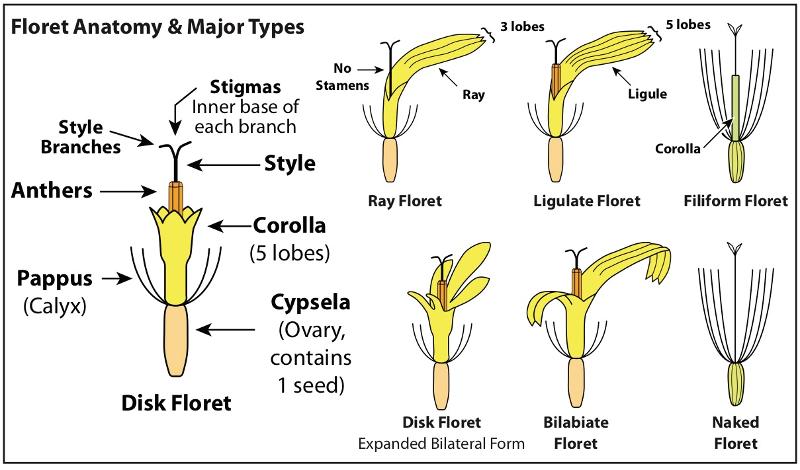The flower
Basic parts of a flower
An individual flower of the Asteraceae has...
- one pistil with an inferior ovary and a cleft style with two style branches
- 5 stamens whose anthers (not the filaments, as in the Malvaceae) are fused into a tube around the style
- a corolla of 5 fused petals. (This corolla may have bilateral or radial symmetry - see flower types and head types below)
- a pappus (usually) of bristles or scales, which is a modified calyx.
The fruit is an achene

Anthers and style branches may have appendages, as shown below.

Corolla shapes
Corollas may have radially symmetry or bilateral symmetry. Beyond that, however, there are at least 3 types of corollas with bilateral symmetry and 2-3 with radial symmetry.
The figure below, from Allen and Roberts (2013), shows seven variations in corolla shapes. The most common, and those used in the Jepson Manual, are
- the disk flower, with radial symmetry
- the ray flower, with a strap-shaped corolla that has three lobes at the tip.
- the ligulate flower, with a strap-shaped corolla that has five lobes at the tip. ("Ligule" means tongue.)
- and a bilateral flower that has two lobes shorter than the other three. (This is shown as the expanded bilateral form of the disk flower, below.)

Pappus types
The pappus (the modified calyx) of the flower, may be...
- absent,
- composed of scales (thin, membranous, semi-leaf-like structures, as in the top drawing from Groom, above),
- composed of bristles (hair-like structures), or
- composed of needle-like awns (basically, stiff needle-like structures)

If the pappus consists of bristles, the bristles may be...
- plummose bristles, having secondary, feathery hairs,
- capillary bristles (smooth), or
- barbed bristles
The function of the pappus is generally to help disperse the fruit. A pappus of long bristles, like that of dandelion, helps carry the achene through the air. A pappus of stiff needle-like awns usually stick in fur and socks and carry the achene away on an animal.